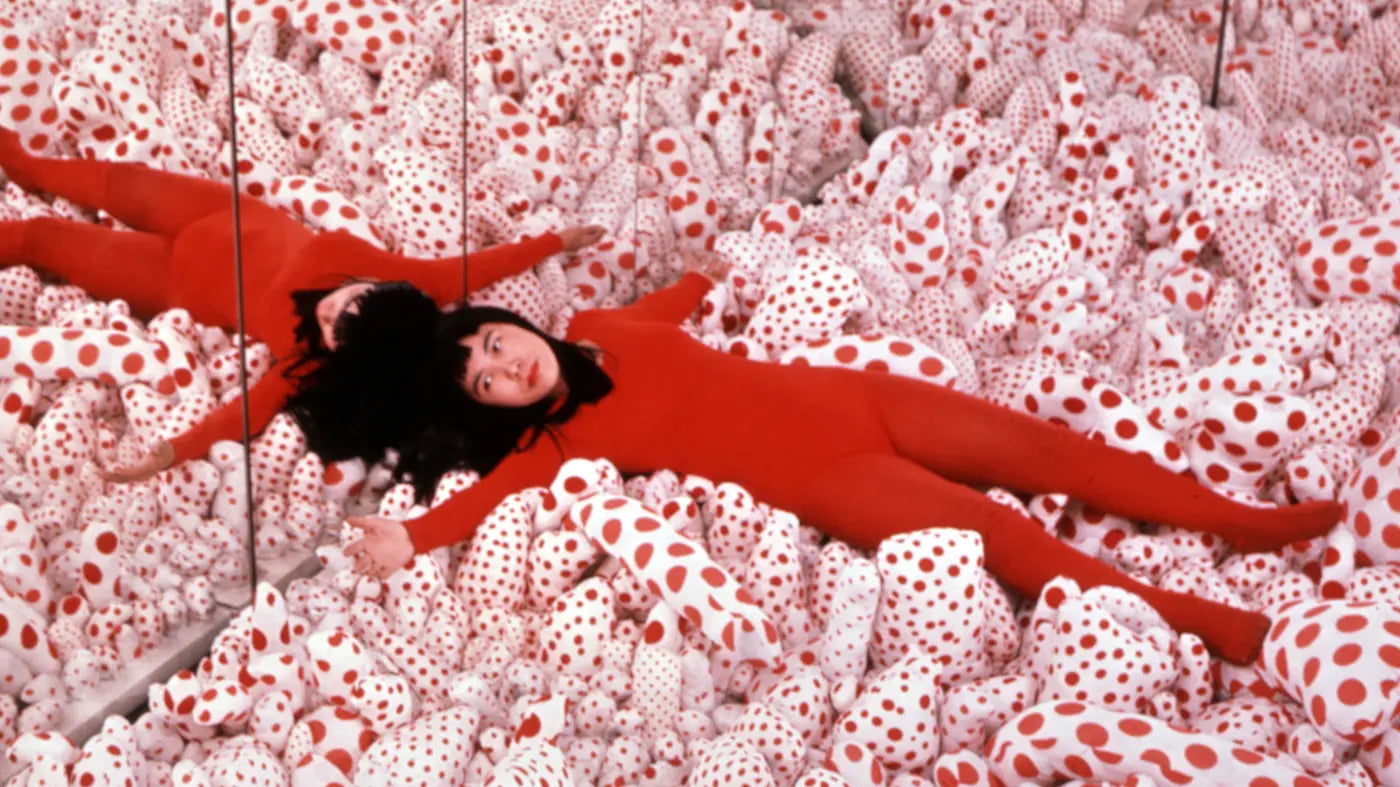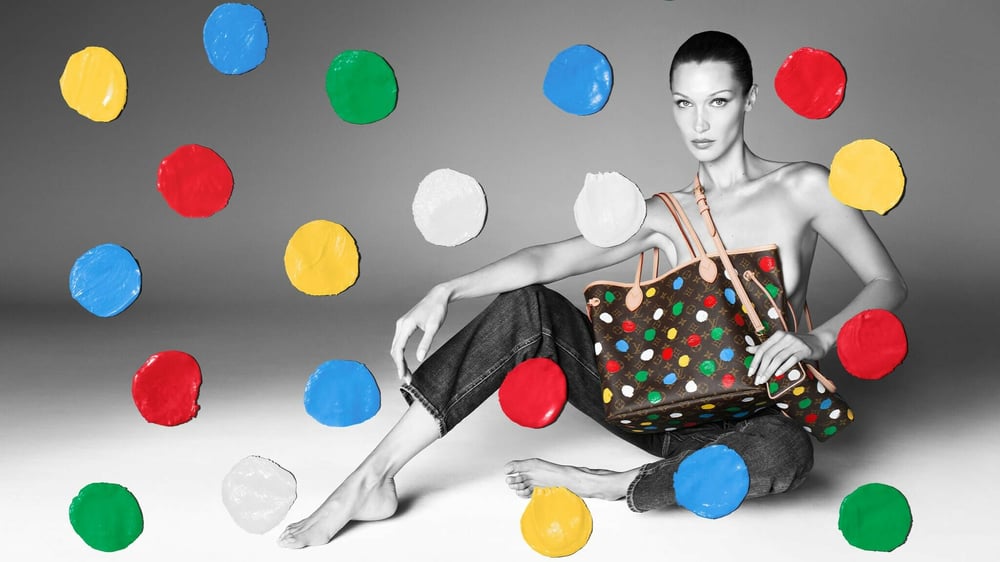
Who is Yayoi Kusama?
He is one of the most important artists of our time, who has been dazzling the public with his immersive installations “Infinity Mirror Rooms” with an aesthetic that embraces light, polka dots and pumpkins. The avant-garde artist rose to prominence in 1960s New York, where she staged provocative Happenings and exhibited hallucinatory paintings of loops and dots that she called “Infinite Networks”. Kusama also influenced Andy Warhol and foreshadowed the rise of feminist and pop art. He has exhibited at the Museum of Modern Art, Center Pompidou, Tate Modern and the National Museum of Modern Art in Tokyo. In 1993, Kusama represented Japan at the Venice Biennale. Today, his work regularly sells for seven figures on the secondary market. Throughout the disparate practice, Kusama continued to explore her own obsessive-compulsive disorders, sexuality, freedom and perception.

What is Yayoi Kusama's life story?
Kusama started painting as a child, around the time he started having hallucinations that often involved fields of dots. The artist grew up in Matsumoto during Japan's foreign policy expansion in the 1940s, with Kusama's family working in a seed nursery. In 1948, aged 19, he moved to Kyoto to study the traditional style of nihonga painting at the Kyoto Municipal School of Arts and Crafts. Later, he trained in the technique of yōga, a form of Japanese painting in a Western style associated with Japan's rapid modernization.
Moving to the United States in the late 1950s, after being encouraged through correspondence with American painter Georgia O'Keeffe. Before leaving Japan, the artist destroyed many of his early paintings. Kusama's reputation in Europe grew in the 1960s, with his work exhibited in Amsterdam, Milan, Rotterdam, Stockholm, Turin and Venice.
Yayoi Kusama has worked with numerous techniques such as painting, collage, sculpture, video, performance, installation, fashion, literature and music. Infinity Mirror Rooms and other large-scale installations, with dotted patterns that cover surfaces with incessant repetition, aim to overwhelm the senses. Mirrors create vertiginous spaces that double our gaze.

What are the characteristics of Yayoi Kusama's works?
Yayoi Kusama is a contemporary Japanese artist known for her works that explore repeating patterns, vibrant colors and organic forms. Some of the main features of his works include:- Repetitive patterns: Kusama is known for her ability to create repetitive patterns, often using shapes such as circles, dots and lines. These patterns are often used on a large scale and on diverse surfaces such as walls, floors and objects.
- Vibrant colors: Kusama's works often feature bold, vibrant colors such as red, yellow, blue, and pink. These colors are used strategically to create an impactful visual effect.
- Organic shapes: many of Kusama's works feature organic forms such as cells, tentacles and bubbles. These shapes are often used in conjunction with repeating patterns and vibrant colors to create a sense of movement and dynamism.
- Light Usage: some of Kusama's more recent works feature the use of light to create an immersive experience for the viewer. These works often involve the use of mirrors and LED lights to create a sense of expanse and infinity.
- Psychological themes: many of Kusama's works explore psychological themes such as anxiety, fear, and obsession. These themes are often reflected in the repetitive shapes and patterns used in his works.

What are Yayoi Kusama's influences?
-
Yayoi Kusama was influenced by a variety of artistic and cultural movements, as well as personal experiences throughout her life. Some of the main influences on his work include:
- Surrealism: Kusama was influenced by the Surrealist movement, especially the works of Salvador Dali is also attracted by the ideas of exploring the subconscious and the imagination through art.
- Minimalism: Kusama was also influenced by the minimalist movement, especially the work of Donald Judd and Sol LeWitt. He appreciated the simplicity and cleanliness of minimalist forms, but he also liked to subvert these ideas by adding his own patterns and colors.
- pop art: Kusama was present in the New York art scene during the pop art era, and was influenced by artists such as Andy Warhol and Claes Oldenburg. He liked the popular and accessible nature of pop art, and he incorporated some of these elements into his own works.
- Japanese culture: Kusama grew up in Japan during World War II, and Japanese culture had a strong influence on her life and work. It was influenced by traditional Japanese art, such as the art of ukiyo-e and the tea ceremony, and also by Japanese pop culture, such as music and fashion.
- Mental ilnesess: Kusama has suffered from mental disorders since childhood, and his experiences with these illnesses have had a major influence on his art. He often uses repetitive patterns in his works to express his feelings of anxiety and obsession, and he also incorporates elements of hallucination and delirium in some of his works.

How did Yayoi Kusama become so famous?
The most obvious answer is “Instagram”. Thousands of people photograph themselves in Kusama's unique space wonders and share them on social media (see #YayoiKusama or #InfiniteKusama). Many contemporary art galleries are currently exploring the idea of exhibition as an “experience” on social media. It was with this idea, first created in New York in 1966, that the artist managed to conquer the market.

Why does Yayoi Kusama like pumpkins?
Yayoi Kusama has had a fascination with pumpkins since her childhood in Japan. In her memory, she remembers seeing rows of pumpkins growing in a field near her home and feeling a deep connection with the shape and texture of the pumpkin. Kusama has used the pumpkin as an element in her art since the 1950s, including pumpkin carvings in various shapes and sizes, as well as paintings and drawings of pumpkins. The pumpkin for the artist is a simple and humble form, but also a representation of fertility, abundance and life. For Kusama, the pumpkin is an object that conveys a sense of joy and hope, and is a recurring symbol of her art full of imagination and fantasy.

Why does Yayoi Kusama like balls?
YYayoi Kusama has an obsession with balls or dots, which started when he was a child and experienced hallucinations with dots covering everything in his field of vision. He describes this experience as an "obsessive vision" that became a source of inspiration for his artistic production. For Kusama, balls and dots represent a sense of unity and infinity, and he sees his art as a way of "building a world" out of balls and dots. Yayoi Kusama uses balls in a wide variety of works, including paintings, sculptures, installations and performances. He often uses repeating balls to create patterns and textures, which he believes is a way to capture the movement and flow of life. Additionally, he frequently uses balls in sculptures and installations to create immersive environments that invite the viewer to participate and engage with the work. For Kusama, the balls are a symbol of his artistic production and a way of expressing his vision of the world.

Yayoi Kusama no Tate
Yayoi Kusama's Mirror Rooms are some of the most popular works of art today, and this installation continues to sell out. But the Tate knows this, so they've just extended the exhibition through June 2023 and are releasing new tickets.
There are two featured works: 'Infinity Mirrored Room – Filled with the Brilliance of Life', one of Kusama's largest installations, created specifically for her 2012 historical retrospective at Tate Modern, and 'Chandelier of Grief', a 2016 room that creates the illusion of a limitless universe of rotating Swarovski crystal light fixtures. Kusama, whose spotted pumpkins basically destroyed Instagram in 2016, began her 'Infinity' or 'Mirror Room' series in 1963, disorienting environments that play with notions of space and distance, as well as creative possibilities and her own sometimes troubled state of mind. Experiencing one of them is unforgettable. Tickets are free for Tate members, £10 for non-members and just £5 if you're still under 25.

